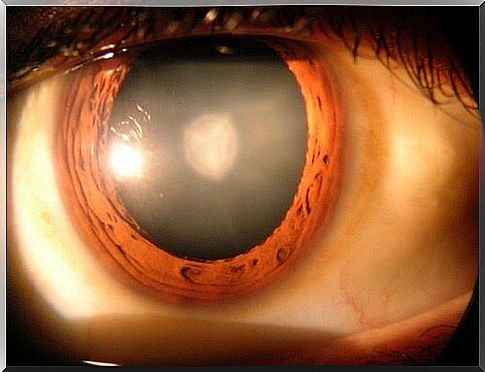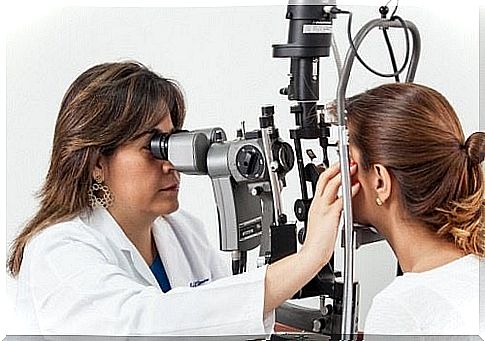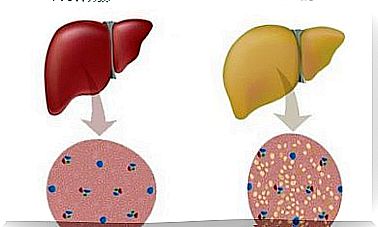8 Things To Know About Cataracts
Since cataracts can occur at any age, we must take care of our eyes and go to the ophthalmologist every year to check for possible problems.

When you hear about cataracts, you immediately think of “vision problems” and “old people”. This is not without reason, as it is estimated that half of people in their 80s actually suffer from cataracts.
But the problem does not end there. Did you know that the first symptoms of this pathology very often appear around the age of 40? From the age of 60, the sight becomes really very affected.
If you are in this age group, we suggest that you continue reading this article to learn more about cataracts. You may be already starting to experience the first symptoms, but you are not paying enough attention to them.
Find out all you need to know about cataracts below.
1. Cataracts do not form on the eyes
The first thing you need to know about cataracts is that they don’t form on the eyes. Most people associate this disorder with some kind of layer that forms on the pupil.
In fact, it forms inside the eyes. Sight becomes cloudy when the proteins that normally compress the lens of the eye break down. This process is completely painless and the person who experiences it only realizes it after several years, since the diagnosis requires medical intervention.
2. Age is not a risk factor
You should also know that age does not influence the onset of cataracts. Although it is certain that most people develop it after they reach a certain age, anyone can have this problem.
In particular people who:
- Have had eye surgery.
- Have suffered from glaucoma.
- Exposed themselves to the sun regularly without protective glasses.
Congenital cataracts should not be overlooked either. Some babies are born directly with cataracts. This is due to infections or developmental issues they experienced during gestation, due to nutrient deficiency.
3. Symptoms of a cataract
Even though cataracts develop very slowly, if you pay enough attention to it, you can spot it early. For that, here is a list of the most common symptoms that it causes:
- Blurry or unclear vision.
- Loss of peripheral vision. The more time passes, the more difficult it will be to see things that are not directly in your field of vision.
- Problems distinguishing colors.
- Problems seeing well at night.
- Double vision.
- Sudden changes in the degree of correction of glasses.
4. Cataracts can affect only one eye
This is information that few people know about. Cataracts may only affect one eye. Although the so-called “bilateral” cataract is the most common, some people develop this problem on only one of their two eyes.
It usually shows up after a blow or trauma. This is why it is strongly recommended to consult an ophthalmologist if you have just received a blow directly on the eye or just next to it.
It is likely that you will not feel any embarrassment at the time. But, a few years later, you will certainly develop a condition that will prevent you from seeing properly.
5. Cataracts affect eyesight in different ways
The presence of a cataract disturbs the sight, it is a certainty. However, some patients with it have perfectly normal eyesight, they are simply more sensitive to light.
Others experience difficulty in a dark environment or at night, but can see perfectly well when there is sufficient natural light.
Cataracts do not necessarily develop in the same way in all patients.
6. Surgery is not always necessary
People with mild cataracts can fight it using less intrusive treatments. Years can go by without patients needing surgery.
It is very important that you talk to your doctor about your problem so that they can assess the seriousness of the situation and recommend the best solution.
With his advice, you will be able to make your choice and you may only need to take pharmacological treatment and make regular visits to the ophthalmologist.
7. Cataract surgery is frequent and very safe
It is normal for you to be very worried if your doctor tells you that you have a cataract and that you need to have an operation. But, if this is your case, then you don’t have to worry too much because it is one of the most frequent and safest surgeries out there.
Currently, this procedure has a 96% chance of success, a statistic that ranks it among the most effective in all of modern medicine. This surgery only requires local anesthesia and a small incision. You won’t even have stitches.
The surgeon will simply remove the lens, then clean up the residue that clutters the eye and implant a new lens. This process takes between 15 and 20 minutes, and in an hour you will be back home.
After the operation, you will need to protect your eyes and you will not be able to run for a while, or perform strenuous efforts for a few weeks.
You will notice, the day after the operation, that your eyesight is clearer. In 4 weeks, your eye will have completely healed and you will see better than ever.
8. The best way to prevent cataracts is to go to the ophthalmologist.
We must all go to the ophthalmologist at least once a year, to prevent the onset of cataracts or any other disease.
During the consultation, you should tell your doctor about any changes you may have noticed. He / She alone is empowered to tell you if you suffer from a specific problem or if one of your eyes is affected by a cataract, which will have to be treated.









